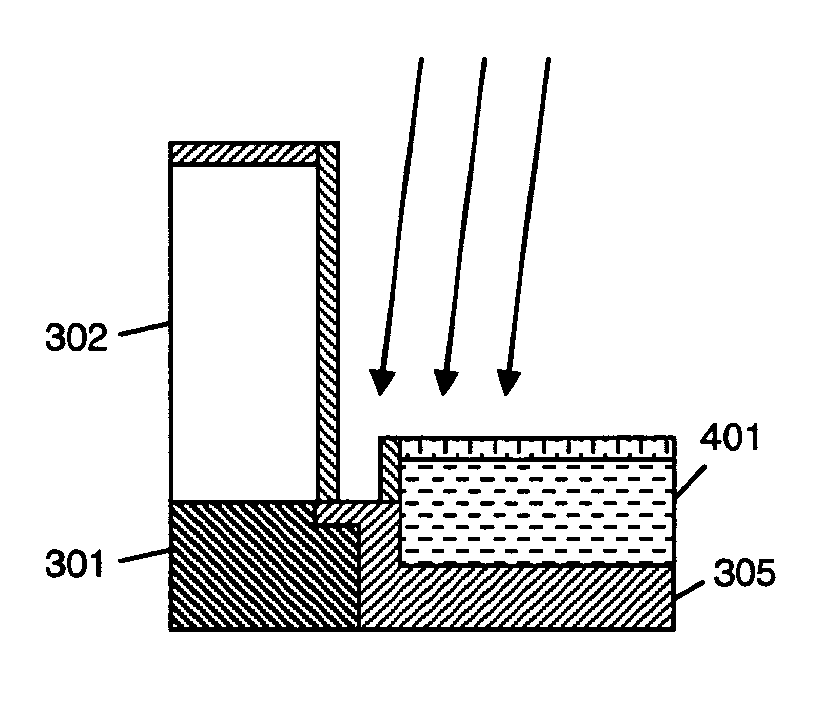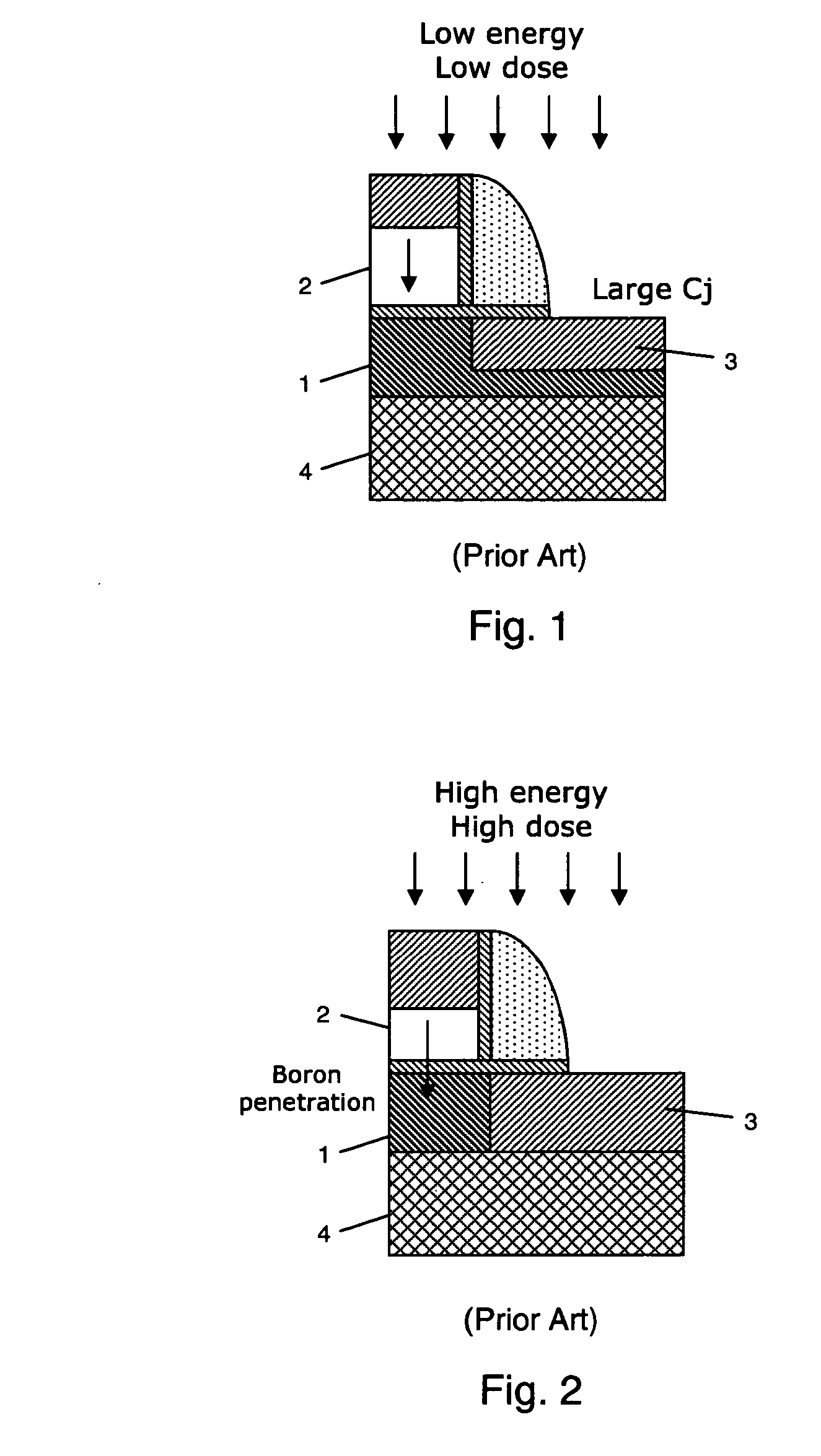SOI bottom pre-doping merged e-SiGe for poly height reduction
a technology of esige and polysilicate, which is applied in the field of soi bottom predoping merged esige for poly height reduction, can solve the problems of introducing other problems, affecting the operation of the transistor, and the gate is too short, so as to achieve the effect of reducing or even avoiding boron penetration of the transistor channel, sufficient boron ions, and superior operating characteristics
- Summary
- Abstract
- Description
- Claims
- Application Information
AI Technical Summary
Benefits of technology
Problems solved by technology
Method used
Image
Examples
Embodiment Construction
[0015] A summary highlighting certain steps in an illustrative manufacturing process will now be described in connection with FIGS. 3-6, which are presented in consecutive order as may be performed in the illustrative process. Referring to FIG. 3, a portion of a conventional SOI wafer is shown including a silicon body 301. A p-type field-effect transistor (PFET) polysilicon gate 302 is formed on silicon body 301, and sidewall spacers 304 are formed on the sidewalls of gate 302. Gate 302 is also capped with a SiN layer 303. A recessed portion 305 of silicon body 301 is pre-doped by boron implantation. Next, in FIG. 4, an SiGe layer 401 is epitaxially grown on recessed portion 305. After extension formation is performed in FIG. 5, then in FIG. 6 gate 302 and source / drain regions are implanted with low energy boron, thereby reducing or even avoiding boron penetration into the channel below gate 302. Such low energy boron may have an energy in the range of, for example, 2-10 KeV, such a...
PUM
 Login to View More
Login to View More Abstract
Description
Claims
Application Information
 Login to View More
Login to View More - R&D
- Intellectual Property
- Life Sciences
- Materials
- Tech Scout
- Unparalleled Data Quality
- Higher Quality Content
- 60% Fewer Hallucinations
Browse by: Latest US Patents, China's latest patents, Technical Efficacy Thesaurus, Application Domain, Technology Topic, Popular Technical Reports.
© 2025 PatSnap. All rights reserved.Legal|Privacy policy|Modern Slavery Act Transparency Statement|Sitemap|About US| Contact US: help@patsnap.com



